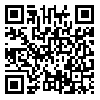Sun, Jun 1, 2025
[Archive]
Volume 5, Issue 2 (June 2009)
IJEEE 2009, 5(2): 93-101 |
Back to browse issues page
Download citation:
BibTeX | RIS | EndNote | Medlars | ProCite | Reference Manager | RefWorks
Send citation to:



BibTeX | RIS | EndNote | Medlars | ProCite | Reference Manager | RefWorks
Send citation to:
Boggia G, Camarda P, Cormio C, Grieco L A. Evaluation of a BIBD Based Directional MAC Protocol for Wireless Ad Hoc Networks. IJEEE 2009; 5 (2) :93-101
URL: http://ijeee.iust.ac.ir/article-1-145-en.html
URL: http://ijeee.iust.ac.ir/article-1-145-en.html
Abstract: (13364 Views)
The use of directional antennas in wireless ad hoc networks can significantly improve global performance due to a high spatial channel reuse. Nevertheless, its introduction poses new location dependent problems related to the MAC protocol. In this paper, the Balanced Incomplete Block Design theory has been exploited to develop a new MAC protocol for wireless ad hoc networks using directional antennas. It is a time slotted protocol, which is highly scalable. Moreover, it can provide a high number of concurrent communications, depending on the number of directional antennas mounted on each node, great fairness in bandwidth sharing and significant energy saving. In particular, energy saving provided by our scheme is consistently higher compared to those of usual directional MAC protocols for the following reasons. Firstly, control packets are sent only over fairly selected beams rather than over all the available ones. Secondly, our protocol provides a filtering, i.e. a fair selection, of the nodes that can try the access to the medium in each time slot. Simulation results validate the advantages of our protocol by proving high spatial reuse, great fairness and significant energy saving and by showing that it improves the overall system performance.
Type of Study: Research Paper |
Subject:
Wireless Access (WLL, WLAN, WPAN)
Received: 2009/05/31 | Accepted: 2009/05/31
Received: 2009/05/31 | Accepted: 2009/05/31
| Rights and permissions | |
 |
This work is licensed under a Creative Commons Attribution-NonCommercial 4.0 International License. |







